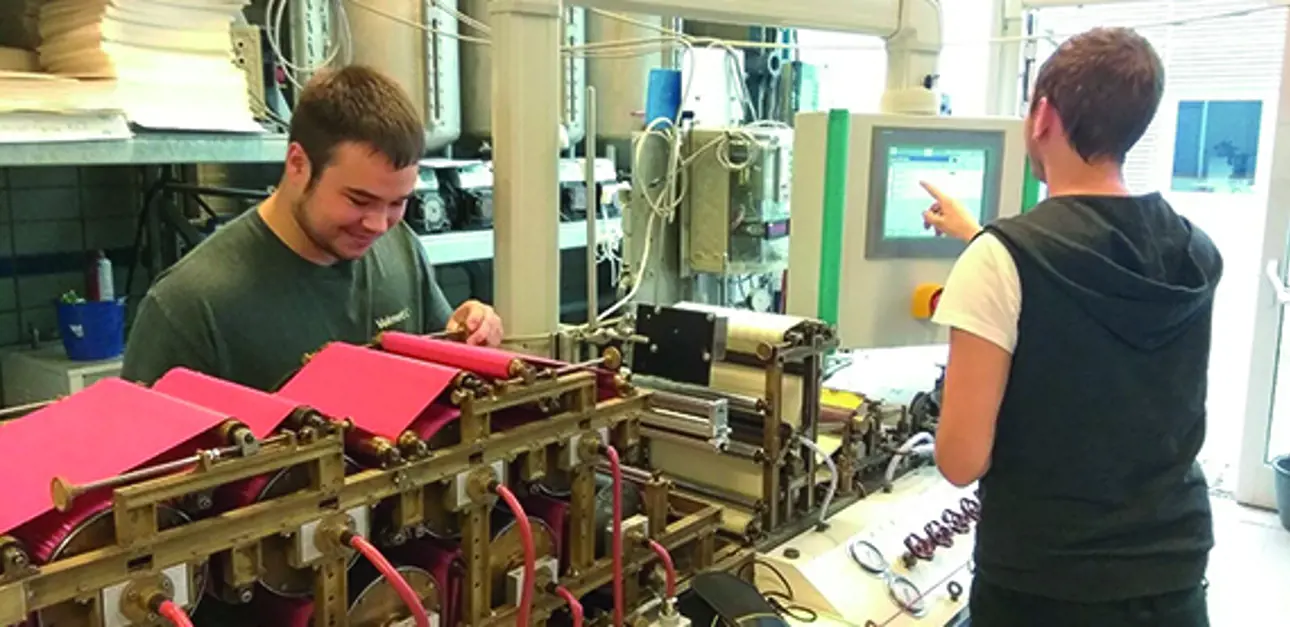A deep dive into papermaking
Aug 13, 2020
Jelle Schuivens has joined Valmet as an intern and trainee. At Valmet, he has been using every opportunity since his bachelor’s degree to discover the different areas of paper production. We asked him about his experiences.

Jelle Schuivens chose to study paper technology at the Munich University of Applied Sciences, because he was fascinated by papermaking. To gain international experience in the paper industry and to work on his own at an early stage, he joined Valmet as an intern. Since then he has participated in a one-year work stay in the USA, spent two-years as a summer trainee in Finland and was a trainee in Italy and Belgium.
How did you come to study paper technology?
Instead of my matriculation exam, I completed my training as a paper technologist in Gernsbach, Germany. I went through every area of the paper mill, from raw material handling, stock preparation, paper and board machines to shipping. Then I decided to take a year off from school and go to work for Valmet in the preventive maintenance department of a paper mill in the USA. That awakened my appetite for more, and for further study.
Can you give an example of the tasks you were assigned?
One of my trainee experiences took place at a paper mill in Italy. The state-of-the-art machine there produces test liner for corrugated board. I was allowed to carry out tests on an interesting former and headbox combination. It was one of the first of its kind, consisting of a horizontal shoe and blade former, and a multi-layer headbox with Aqualayer technology. I started tests on the headbox – things like jet-wire ratio optimization and layer flow distribution – and documented them. I set the optimal dewatering parameters for the former. With the Aqualayer, I investigated further parameters that led to maximum strength properties.
How would you describe your role in the team?
For example, responsibility in production looked like this: I was given a plan/diagram (P&ID) with the request to flush the showers of the wire and press sections all by myself. I noticed again and again that trust was placed in me, and that my work made sense.
During that time, I worked several night shifts. I was often “Mister Valmet” – and got to answer questions when problems arose. This allowed me to go troubleshooting with the customer, and I learned a lot. I could determine with the customer which values needed to be changed on the machine to achieve the desired result. And when you solve the problem, it’s a great feeling and incredibly exciting.

How did being a trainee at Valmet meet your expectations?
They were more than exceeded. I couldn’t imagine getting so much responsibility. I learned a lot about commissioning and saw for the first time how paper gets onto the reel. I was given a lot of meaningful tasks that helped me improve my technical skills.
Can you imagine a future at Valmet?
Absolutely. My plan is to continue working in the commissioning team after my studies. At Valmet, I know I can develop myself further. For example, it is possible to start out as a process engineer, and if you do well, you can advance to a position with more responsibility for staff and big machinery.
Would you recommend Valmet to others?
I’m always recommending Valmet to others. It’s exciting to have the opportunity to spend time abroad and work with other nationalities. Part of the time, I was the only German among Finns. I was often able to stand out with a different approach. That’s certainly not always an easy undertaking as an outsider, but – with a little patience – it’s no problem!
Related articles


